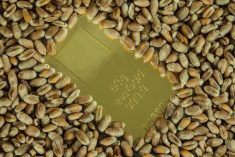Frost isn’t good for crops. But the threat of frost can be good for prices. And fear of frost is beginning to work its way beyond the farm gate and out into the upper reaches of the markets.
Yesterday I was called by one of the American analysts I often interview and he wanted a view on the threat of frost to the canola crop. He’d received a weather forecast that showed a strong chance of frost in eastern Saskatchewan and Manitoba this weekend and wanted to know how badly that would affect canola crops there. How close to mature are the eastern prairies’ canola crops?
Read Also

Kochia has become a significant problem for Prairie farmers
As you travel through southern Saskatchewan and Alberta, particularly in areas challenged by dry growing conditions, the magnitude of the kochia problem is easy to see.
The answer I gave is the answer to that question I get when I’ve asked crop watchers across the region: very variable, and quite immature. Needs two to three weeks to escape serious quality damage if a frost comes.
Apparently it’s the same situation in the U.S. Midwest, with crops two to three weeks behind average maturity and frost dates beginning to chill watchers’ hearts.
Frost is bad for production, but fear of frost could give us a nice little rally if it grows and grows and grows and buyers of canola and speculators get more and more worried about frost. So much of the prairie crop is so late that this uncertainty could really kick in at some point, especially after traders return to their desks from their cottage vactions after this week and begin to take this sort of stuff seriously. Right now all the markets are in their traditional “Who cares?” August attitude. (That’s probably why September is about the worst month in the year for stocks over the long run: all the problems that fun at the beach and BBQs and Corona with lime have covered up begin to look a lot more stark once traders are back in the playground – I mean “work.”)
And analysts who actually work hard over the summer, like the one I was talking to, will have research reports ready for them, sitting on the fax machine.
But the fear factor, while it provides a chance at a rally, methinks, will be a necessarily short-lived phenomenon unless widespread frost damage occurs. Just like stocks climbing a wall of worry, commodity prices will fall as the fear drips away as the harvest comes in. So if there’s a rally in the next couple of weeks, it’s probably best not to assume it’s the beginning of a big leg up and a new bull market. It might be, but that’s not a safe assumption if it’s kicked off by a sudden realization of the danger of frost, a danger that by early October is out of the market.

















